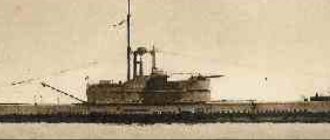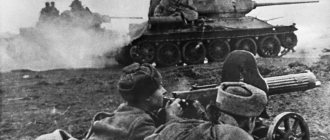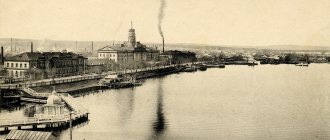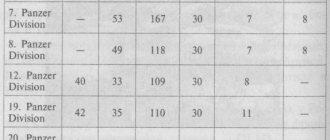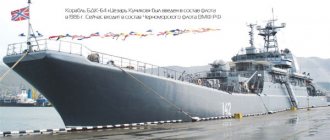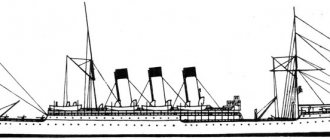Class of armored cruisers of the Imperial German Navy
| One of the Roon | |
| Class Overview | |
| Name: | Rune |
| Builders: |
|
| Operators: | Imperial German Navy |
| Preceded by: | Prinz Adalbert class |
| Successor: | Scharnhorst class |
| Built: | 1902–1906 |
| On the commission: | 1905–1916 |
| Completed: | 2 |
| Lost: | 1 |
| Disposed of: | 1 |
| General characteristics | |
| Class and type: | Armored cruiser |
| Bias: |
|
| Length: | 127.8 m (419 ft) |
| Ray: | 20.2 m (66 ft 3 in) |
| Project: | 7.76 m (25 ft 6 in) |
| Installed power: |
|
| Movement: |
|
| Speed: | 21.1 kn (39.1 km/h; 24.3 mph) |
| Classify: | 4,200 nmi (7,800 km; 4,800 mi) at 12 kn (22 km/h; 14 mph) |
| Crew: |
|
| Weapons: |
|
| Armor: |
|
Roon
The class
was a pair of armored cruisers built for the German Kaiserliche Marine
(Imperial Navy) in the 1900s.
The two ships of the class, Rhun
and
York
, closely resembled the earlier
Prinz Adalbert-
on which they were based.
Roon
class includes small additional improvements, including a couple of additional boilers. The ships are easily distinguished from their predecessors by the addition of a fourth funnel. Although the additional boilers were intended to increase the ships' speed, both ships failed to reach their designed maximum speed. In addition, the ships had relatively light armament and thin armor protection, so they compared poorly with their foreign contemporaries, especially with the armored cruisers of their main enemy, the British Royal Navy.
Two ships served in I Scouting Group, the reconnaissance force of the High Seas Fleet after they entered service in 1905–1906. During this period York
and
Rune
served as the group's flagship and second-in-command, respectively.
By the early 1910s, the first German battlecruisers began to enter service, and Roon
was decommissioned in 1911 and placed in reserve;
York
joined in 1913.
Both ships were recommissioned after the outbreak of World War I in July 1914. They were assigned to III Reconnaissance Group with Roon.
as its flagship, and was tasked with surveying the main body of the German fleet.
In November the German fleet raided Yarmouth, but upon returning to the port of Wilhelmshaven, the fleet encountered thick fog and was forced to stop off Schillig. Yorck
's commander decided that visibility had improved so he ordered his ship to move again, but she quickly struck two German mines and sank with heavy loss of life.
Roon
was transferred to the Baltic in April 1915 and took part in a series of offensive operations against Russian forces, including the attack on Libau in May, the Battle of Åland in July and the Battle of the Gulf of Riga in August. The threat from British submarines led to her decommissioning in 1916, after which she was used as a training and accommodation vessel. Plans to turn her into a seaplane tender at the end of the war came to nothing due to the German defeat in 1918, and she was struck from the naval register in 1920 and broke up the following year.
Design[edit]
Prinz Adalbert
, the basis of the
Roon
The Second Naval Law in Germany, passed in 1900, provided for fourteen armored cruisers for overseas service in the German colonial empire and as scouts for the main battle fleet in German waters. The program of naval expansion was primarily directed against the British Royal Navy, which was the preeminent naval force at the time. the Prinz Adalbert class armored cruiser
served as the basis for the construction of the next pair of ships in the program.
The design of the new ships, completed in 1901, was a slight improvement over the Prinz Adalbert
s, with the main changes being the addition of two boilers, which required a longer hull and provided an increase in power of approximately 2,028 horsepower (2,000 hp). .). The design staff predicted that the ships would achieve a speed of 0.5 knots (0.93 km/h; 0.58 mph) compared to earlier cruisers, but none achieved this speed in service. This failure was primarily a result of their length to width ratio, which was a result of the restrictions imposed by the quay structures at Wilhelmshaven. [12]
To Rhun
The A-class ships share many of the same layout characteristics of modern German pre-dreadnought battleships, including smaller main armament but heavier secondary batteries than their foreign counterparts.
And, like all previous German armored cruisers, they received less armor protection than their counterparts in the British Navy. As a result, they were compared to their British contemporaries. [3] [4] Historian John Taylor describes the ships as "poorly protected and not very successful in service." [5] In addition, they suffered the same fate as many dreadnought-type vessels built in the mid-1900s, which were rendered obsolete by the advent of large guns. Warships such as the British battlecruiser Invincible, launched
in 1907.
[6] Despite their shortcomings, the Roon
Scharnhorst
class , which proved to be much better warships than their British counterparts. [7]
General characteristics and technology [edit]
Roon
class plan and facade Roon class ships
were 127.30 m (417 ft 8 in) long at the waterline and 127.80 m (419 ft 3 in) overall.
They had a beam of 20.20 m (66 ft 3 in) and a draft of 7.76 m (25 ft 6 in). Roon
and
York
moved 9,533 metric tons (9,382 long tons) under normal operation and 10,266 metric tons (10,104 long tons) at full load. Their hulls were constructed from transverse and longitudinal steel frames that formed a structure over which steel hull plates were riveted. The hulls had twelve watertight compartments and one double bottom, which made up sixty percent of the ship's length. [2]
Like previous Prinz Adalbert
,
Rhun
and
York
were good sea boats; when the fuel tanks were full, they made a slight movement. They also maneuvered well and were responsive to the steering; steering was carried out by a single rudder. When the rudder was turned upside down, the ships lost up to 60 percent of their speed. The ships' casemates were placed too low and as a result they were extremely wet, making them impossible to use in heavy seas. The ships had a metacentric height of 1.04 m (3 ft 5 in). Their standard composition consisted of about 35 officers and 598 enlisted men. While serving as the squadron's flagship, the crew was augmented by 13 officers and 62 men, and as the second command ship by 9 officers and 44 sailors. [8]
Rune
and
York
were powered by the same engine system as the previous class, three 3-cylinder triple expansion vertical cylinder engines, each driving one of the ship's three propellers.
The central propeller was 4.50 m (14 ft 9 in) in diameter and the outer propellers were 4.80 m (15 ft 9 in) in diameter. Steam was supplied to the engines by sixteen coal-fired water-tube boilers built by the Düsseldorf-Ratinger Röhrenkesselfabrik (Dürr). Each boiler had 4 fireboxes, for a total of 48. The boilers were divided into four funnels. The propulsion system produced 19,000 hp. (14,200 kW) with a rated top speed of 22 kn (41 km/h), although no ship reached this figure on trials, with Roon
at 21.1 kn (39.1 km/h; 24.3 mph ), and
York's is
only 20.4 knots (37.8 km/h; 23.5 mph). The ships had four turbogenerators that produced 260 kilowatts at 110 volts. [9]
Weapons and armor[edit]
Front turret " Scharnhorst"
;
the Roon
-class cruisers are of the same type
The ship's primary armament consisted of four 21 cm (8.3 in) SK L/40 guns mounted in two twin-gun turrets, one forward and one stern. The turrets were hydraulically driven DrL C/01 type turrets and the mounts provided an elevation range of -5 to +30 degrees. These guns fired a 108 kg (238 lb) armor-piercing projectile with a muzzle velocity of 780 meters per second (2,600 ft/s) to a maximum range of 16,200 m (17,700 yd). [11] [12] The Roon-
carried 380 rounds for the main battery. [2]
The main battery was supported by an additional battery of ten 15 cm (5.9 in) SK L/40 guns in single turrets and casemates grouped amidships. These guns fired a 40 kg (88 lb) projectile with a muzzle velocity of 800 m/s (2,600 ft/s). They could be elevated up to 30 degrees, giving a maximum range of 13,900 m (15,200 yd). For protection against torpedo boats at close range, the ships carried a tertiary battery of fourteen 8.8 cm SK L/35 guns, which were mounted in separate casemates and hinged mounts in the superstructure. The 8.8 cm guns fired a 7 kg shell. (15 lb) with a muzzle velocity of 770 m/s (2,500 ft/s). These guns had a maximum elevation of 25 degrees and a firing range of 9,100 m (10,000 yd). Each ship carried 1,600 shells for 15 cm caliber guns and 2,100 shells for 8.8 cm caliber guns. [2]
As was common for warships of the time, the ships were also equipped with four 45 cm (17.7 in) torpedo tubes. These pipes were immersed in the hull: one in the bow, one in the stern and one on each side. [11] [13] The C/03 torpedo carried a 147.5 kg (325 lb) warhead and had a range of 1,500 m (4,900 ft) at a speed of 31 kn (57 km/h; 36 mph) and 3,000 m ( 9,800 ft) at 26 kn (48 km/h; 30 mph). [14]
Rune
and
York
were protected by Krupp cemented steel armor. At the waterline, their armored belt was 100 mm (3.9 in) thick amidships, where the ships' vital organs were located. It was reduced slightly to 80 mm (3.1 in) at both ends of the center belt section. The belt was supported by 55 mm (2.2 in) teak planking. On the deck of the casemate, the side armor was also 100 mm thick. The armored deck was 40 to 60 mm (1.6–2.4 in) thick and was connected to the belt by 40–50 mm (1.6–2.0 in) thick sloped armor. The forward conning tower had 150 mm (5.9 in) thick walls and a 30 mm (1.2 in) thick roof. The rear conning tower was less protected; its sides were only 80 mm and its roof was 20 mm (0.79 in). The main gun turrets were armored with 150 mm thick steel sheets on the sides and 30 mm thick roofs. The turrets, 15 cm in diameter, were covered with 100 mm thick sides and 80 mm thick gun shields. [9]
Planned transformation of Roon[edit]
In 1918, the design team prepared plans to re-equip the Roon
into a seaplane tender based on earlier modifications which included the light cruiser
Stuttgart
.
By this time, Rune
was disarmed;
the proposal included the installation of a hangar aft of the main superstructure with equipment to support four seaplanes. She was to have been armed with a battery of six 15 cm L/45 guns and six 8.8 cm anti-aircraft guns, although this never happened due to the end of the war that year. [2] [15]
An excerpt characterizing the York-class armored cruisers
“Go,” he repeated, not believing himself and rejoicing at the expression of embarrassment and fear that appeared on Prince Vasily’s face. - What happened to you? You are sick? - Go! – the trembling voice spoke again. And Prince Vasily had to leave without receiving any explanation. A week later, Pierre, having said goodbye to his new friends, the Freemasons, and leaving them large sums of alms, left for his estates. His new brothers gave him letters to Kyiv and Odessa, to the Freemasons there, and promised to write to him and guide him in his new activities. The affair between Pierre and Dolokhov was hushed up, and, despite the sovereign’s then strictness regarding duels, neither both opponents nor their seconds were harmed. But the story of the duel, confirmed by Pierre’s breakup with his wife, became public in society. Pierre, who was looked upon condescendingly and patronizingly when he was an illegitimate son, who was caressed and glorified when he was the best groom of the Russian Empire, after his marriage, when brides and mothers had nothing to expect from him, lost greatly in the opinion of society, especially that he did not know how and did not want to curry public favor. Now he alone was blamed for what had happened, they said that he was a stupid jealous person, subject to the same fits of bloodthirsty rage as his father. And when, after Pierre’s departure, Helen returned to St. Petersburg, she was not only cordially, but with a touch of respect for her misfortune, received by all her acquaintances. When the conversation turned to her husband, Helen adopted a dignified expression, which she, although not understanding its meaning, with her characteristic tact, adopted for herself. This expression said that she decided to endure her misfortune without complaining, and that her husband was a cross sent to her from God. Prince Vasily expressed his opinion more openly. He shrugged his shoulders when the conversation turned to Pierre, and, pointing to his forehead, said: “Un cerveau fele – je le disais toujours.” [Half-crazy - I always said that.] “I said in advance,” Anna Pavlovna said about Pierre, “I said right then, and before everyone else (she insisted on her primacy), that this is a crazy young man, spoiled by the depraved ideas of the century. I said this back then, when everyone admired him and he had just arrived from abroad, and remember, one evening I thought he was some kind of Marat. How did it end? I didn’t want this wedding then and predicted everything that would happen. Anna Pavlovna continued to host such evenings on her free days as before, and those that she alone had the gift of arranging, evenings at which she gathered, firstly, la creme de la veritable bonne societe, la fine fleur de l' essence intellectuelle de la societe de Petersbourg, [the cream of a truly good society, the color of the intellectual essence of St. Petersburg society,] as Anna Pavlovna herself said. In addition to this refined choice of society, Anna Pavlovna’s evenings were also distinguished by the fact that every time at her evening Anna Pavlovna presented her society with some new, interesting face, and that nowhere, as at these evenings, was the degree of the political thermometer expressed so clearly and firmly, on which the mood of the court legitimist St. Petersburg society stood. At the end of 1806, when all the sad details had already been received about Napoleon’s destruction of the Prussian army near Jena and Auerstätt and about the surrender of most of the Prussian fortresses, when our troops had already entered Prussia, and our second war with Napoleon began, Anna Pavlovna gathered at her place evening. La creme de la veritable bonne societe [The cream of real good society] consisted of the charming and unhappy Helene, abandoned by her husband, from MorteMariet, the charming Prince Hippolyte, who had just arrived from Vienna, two diplomats, an aunt, one young man who enjoyed living room with the name simply d'un homme de beaucoup de merite, [a very worthy person], one newly granted maid of honor with his mother and some other less noticeable persons. The person with whom Anna Pavlovna treated her guests like a novelty that evening was Boris Drubetskoy, who had just arrived as a courier from the Prussian army and was an aide-de-camp to a very important person. The temperature of the political thermometer indicated to society this evening was the following: no matter how much all European sovereigns and commanders try to pander to Bonaparte, in order to cause me and us in general these troubles and sorrows, our opinion about Bonaparte cannot change. We will not stop expressing our unfeigned thoughts on this matter, and we can only say to the Prussian king and others: so much the worse for you. Tu l'as voulu, George Dandin, [You wanted it, Georges Dandin,] that's all we can say. This is what the political thermometer indicated at Anna Pavlovna’s evening. When Boris, who was to be presented to the guests, entered the living room, almost the entire company was already assembled, and the conversation, led by Anna Pavlovna, was about our diplomatic relations with Austria and the hope of an alliance with it. Boris, in a smart adjutant uniform, matured, fresh and ruddy, freely entered the living room and was taken, as it should be, to greet his aunt and again joined the general circle. Anna Pavlovna gave him her withered hand to kiss, introduced him to some faces unfamiliar to him and identified each one to him in a whisper. – Le Prince Hyppolite Kouraguine – charmant jeune homme. M r Kroug charge d'affaires de Kopenhague – un esprit profond, and simply: M r Shittoff un homme de beaucoup de merite [Prince Hippolyte Kuragin, dear young man. G. Krug, Copenhagen chargé d'affaires, deep mind. G. Shitov, a very worthy person] about the one who bore this name. During this time of his service, Boris, thanks to the concerns of Anna Mikhailovna, his own tastes and the properties of his restrained character, managed to put himself in the most advantageous position in his service. He was an adjutant to a very important person, had a very important mission to Prussia, and had just returned from there by courier. He had fully assimilated that unwritten subordination that he liked in Olmutz, according to which an ensign could stand without comparison above a general, and according to which, for success in the service, what was needed was not effort in the service, not labor, not courage, not constancy, but it was necessary only the ability to deal with those who reward service - and he himself was often surprised at his rapid successes and how others could not understand this. As a result of this discovery, his entire way of life, all his relationships with former acquaintances, all his plans for the future - completely changed. He was not rich, but he used the last of his money to be better dressed than others; he would rather deprive himself of many pleasures than allow himself to ride in a bad carriage or appear in an old uniform on the streets of St. Petersburg. He became close and sought acquaintance only with people who were higher than him and therefore could be useful to him. He loved St. Petersburg and despised Moscow. The memory of the Rostovs’ house and his childhood love for Natasha was unpleasant for him, and since leaving for the army he had never been to the Rostovs. In Anna Pavlovna's living room, in which he considered his presence to be an important promotion, he now immediately understood his role and allowed Anna Pavlovna to take advantage of the interest that lay in him, carefully observing each face and assessing the benefits and possibilities of rapprochement with each of them . He sat down in the place indicated to him near the beautiful Helen, and listened to the general conversation.
Construction[edit]
Rune
, probably during her visit to the United States in 1907.
Construction data
| Name | Builder [16] | Namesake | Stowed [16] | Launched [16] | Put into operation [16] |
| Rune | Kaiserliche Werft , Kiel | Albrecht von Roon | August 1, 1902 | June 27, 1903 | April 5, 1906 |
| York | Blohm & Voss, Hamburg | Ludwig York von Wartenburg | April 25, 1903 | May 14, 1904 | November 21, 1905 |
Service history[edit]
Upon enlistment, York
joined I Scouting Group, a reconnaissance squadron of the High Seas Fleet.
She served as the group's flagship for much of her early career, and when Roon
joined her in late 1906, the latter vessel became the second-in-command's flagship (although
Roon
alternated this role with the armored cruiser
Friedrich Karl
).
In 1907, Roon
was sent to the United States to represent Germany at the Jamestown Exhibition. Both vessels made long-distance cruises in the Atlantic in the late 1900s with the I Scouting Group or the entire High Seas Fleet.
Apart from these voyages, the ships were mainly occupied with routine peacetime training. Roon
was decommissioned in September 1911, her place in the squadron being taken by more modern battlecruisers.
In
March 1913,
York
collided with the torpedo boat
S178,
causing the last ship to sink.
Shortly afterwards, York
was decommissioned, [17] [18] and most of her crew were transferred to the new battlecruiser
Seydlitz
. [19]
First World War[edit]
York on
the way, c. 1914
Following the outbreak of the First World War in July 1914, both cruisers were mobilized and transferred to III Reconnaissance Group, which was initially assigned to the High Seas Fleet in the North Sea; Rune
served as the group's flagship.
Both ships were present on the High Seas Fleet's intelligence screen when it sailed to provide remote support to the 1st Reconnaissance Group during the raid on Yarmouth in November; Returning to Wilhelmshaven on the night of 3 November, the ships encountered heavy fog and were forced to anchor in the Schillig roadstead outside the port to avoid encountering defensive minefields laid outside the harbour. York
's commander decided that visibility had improved enough to enter the port, but in the haze he led the ship into one of the minefields.
York
quickly struck a pair of mines and sank with great loss of life.
Rhun
continued to work with the main fleet, taking part in the raid on Scarborough, Hartlepool and Whitby in December. [18] [20] During the operation, she briefly encountered a pair of British destroyers, but neither side opened fire. [21]
By the beginning of 1915 it became clear to the German naval command that older ships like Rhun
were under-armored to take part in action with the powerful British Grand Fleet, [22] and so III Scout Group was transferred to the Baltic Sea in April where it was disbanded and its ships were used to form the Baltic Reconnaissance Force, with Roon
serving
as the flagship of the second-in-command .
Thereafter, she took part in a series of offensive operations against Russian forces, beginning with a joint army-navy attack on Libau in May. Following this, several visits were made to the central Baltic Sea in May and June to try to catch Russian vessels, leading to the Battle of Åland in early July; A group of Russian cruisers attacked several German ships during a mine-laying operation, and Roon
attempted to reinforce the German ships.
Roon attacked
the Russian armored cruiser
Bayan
and was hit, but received several retaliatory strikes before the Germans withdrew from the battle. [23] [24]
Roon
participated in the Battle of the Gulf of Riga in August 1915 and bombed Russian positions at Zerele on the Svorbe Peninsula in company with the armored cruiser
Prinz Heinrich
.
The two cruisers surprised a group of Russian destroyers and damaged one of them before the Russians fled. By the end of 1915, the increased threat from British submarines, demonstrated by the sinking of Prinz Adalbert
in October, convinced the German naval command to withdraw the remaining armored cruisers still in service (by this point only
Roon
and
Prinz Heinrich
).
Roon
was disarmed in 1916 and was used as a training ship and floating barracks. [25] [26] Design work began in 1916 to convert the vessel into a seaplane tender; It was planned that the work would last from 1917 to 1918 for 20 months. The ship was removed from the naval register on November 25, 1920 and decommissioned at Kiel-Nordmohl the following year. [27]
Literature
- Nenakhov Yu. Yu.
Encyclopedia of cruisers 1860-1910. - M: AST, 2006. - ISBN 5-17-030194-4. - Conway's All the World's Fighting Ships, 1860-1905. - London: Conway Maritime Press, 1979. - ISBN 0-85177-133-5.
- Pakhomov N. A.
Armored cruisers of Germany. - St. Petersburg: Eastflot, 2006. - 68 p. — ISBN 5-98830-021-9. - Lisitsyn F.V.
Cruisers of the First World War / executive editor L. Nezvinskaya. - M.: Yauza, EKSMO, 2015. - 448 p. - (War at sea). — 1400 copies. — ISBN 978-5-699-84344-2. - Gröner, Erich.
Die deutschen Kriegsschiffe 1815-1945 Band 1: Panzerschiffe, Linienschiffe, Schlachschiffe, Flugzeugträger, Kreuzer, Kanonenboote. - Bernard & Graefe Verlag, 1982. - 180 p. — ISBN 978-3763748006.
| Type Victoria Louise | "Victoria Louise" · "Herta" · "Freya" · "Vineta" · "Hansa" |
| Type Prince Adalbert | "Prince Adalbert" · "Friedrich Karl" |
| York type | "Roon" · "York" |
| Type Scharnhorst | Scharnhorst · Gneisenau |
)
Armored and light cruisers| Type Bremen | Bremen · Hamburg · Berlin · Lübeck · Munich · Leipzig · Danzig |
| Type Königsberg | Königsberg · Nuremberg · Stuttgart · Stettin |
| Type Dresden | "Dresden" · "Emden" |
| Kolberg type | Kolberg · Mainz · Cologne · Augsburg |
| Type Magdeburg | Magdeburg · Breslau · Strasbourg · Stralsund |
| Karlsruhe type | Karlsruhe · Rostock |
| Type Graudenz | Graudenz · Regensburg |
| Pillau type | "Pillau" · "Elbing" |
| Type Wiesbaden | Wiesbaden Frankfurt |
| Type Königsberg II | Königsberg II Karlsruhe II Emden II Nuremberg II |
| Type Cologne II | Cologne II · "Wiesbaden II" Dresden II |
| Single ships | "Greif" |
| Single ships | "Gefion" · "Hela" |
| Armadillos |
|
| Armored |
|
| Armored |
|
| Lungs |
|
| Minzagi |
|
- "Komet" type
- "Greif"
- Bussard type
- "Gefion"
- "Hela"
| Large destroyers |
|
| Destroyers |
|
| Destroyers |
|
Notes[edit]
Footnotes [edit]
- In Imperial German Navy weapon nomenclature, "SK" (Schnelladekanone) means the gun is fast-loading, and L/40 denotes the length of the gun. In this case, the L/40 pistol size is 40 calibers, which means that the length of the pistol is 45 times the barrel diameter. [10]
Quotes [edit]
- Dodson, pp. 58–59, 66.
- ^ a b c d e
Groener, page 51. - Gardiner, p. 249.
- Dodson, page 174.
- Taylor, page 50.
- Herwig, b. 57.
- Dodson, pp. 67–68.
- Groner, pp. 50-52.
- ^ a b
Groener, pp. 51–52. - Grießmer, page 177.
- ^ a b
Gardiner and Gray, page 140. - Friedman, pp. 141–142.
- Groner, pp. 50-51.
- Friedman, p. 336.
- Greger, p. 88.
- ^ a b c d
Dodson, page 202. - Hildebrand, Röhr, & Steinmetz Vol. 8. pp. 122–123.
- ^ a b
Hildebrand, Röhr, & Steinmetz Vol. 7, p. 81. - Staff, page 22.
- Hildebrand, Röhr, & Steinmetz Vol. 8. pp. 123–124.
- Massey, pp. 340-343.
- Scheer, p. 135.
- Hildebrand, Röhr, & Steinmetz Vol. 7, page 82.
- Pavlovich, p. 145.
- Tucker, pp. 293–294.
- Hildebrand, Röhr, & Steinmetz Vol. 7. pp. 49, 82.
- Groener, p. 52.
